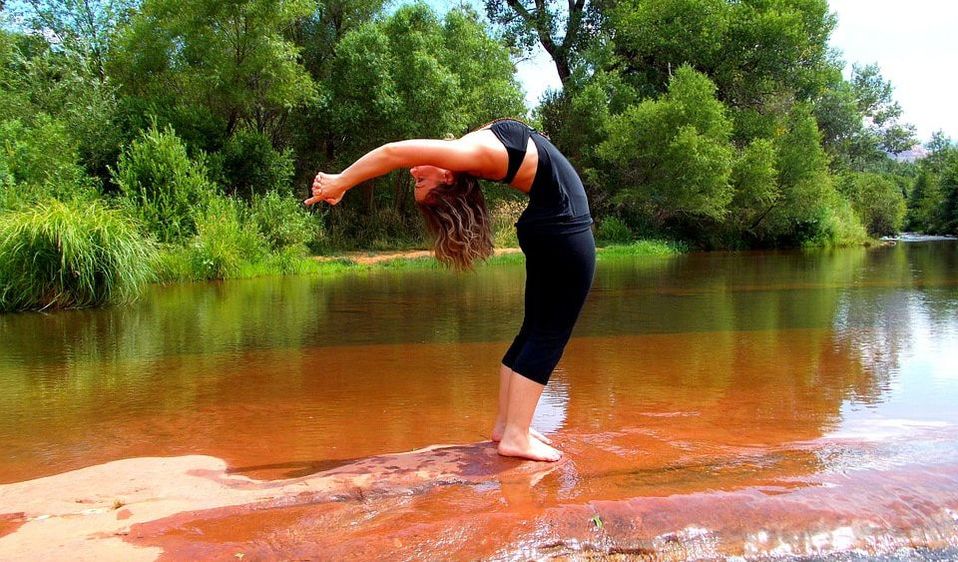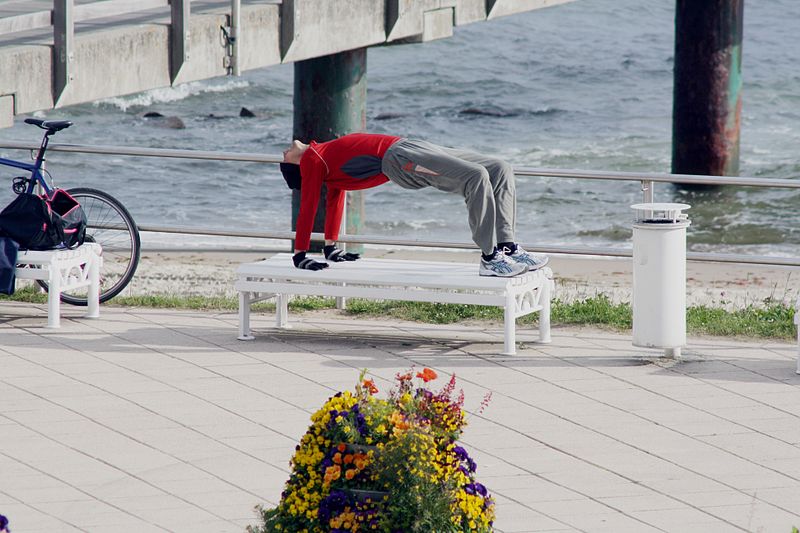CHRONIC PAIN? TRY EXTENSION THERAPY
THE POSTURAL WAR BETWEEN
FLEXION AND EXTENSION
I’ve shown you previously that it’s a huge factor in CHRONIC UPPER TRAPEZIUS TRIGGER POINTS as well as the oft-mistaken triggers of the LEVATOR SCAPULAE (in my experience, the single most common muscle to become “TRIGGERED“). It’s also a significant factor in the degenerative changes that occur with OSTEOPOROSIS. As the body slumps forward, the fronts of the vertebrae must bear the excess mechanical load that’s supposed to be handled by the FACET JOINTS in the back of the spinal column. This this additional forward stress causes the fronts of the vertebrae to compact (they actually become wedge-shaped), forcing a person even further forward —- a vicious cycle of pain, distortion, and dysfunction. The cool thing is that you can do something about this problem.
Because almost everything we do (sitting, driving, working at a computer, reading, watching TV, and even gardening) has the propensity to draw us into a forward posture of flexion, we must consciously do things to reverse the trend. In other words, we must focus on good posture and purposefully pursue extension. Beyond any number of stretches, there are a few things that I highly recommend for people to try.
- DAKOTA TRACTION: The Dakota Traction device is a simple, inexpensive, unit that is used to help restore the normal curve in the neck. You can read more about it HERE. This should be done under the supervision of a Chiropractor.
- EXERCISE BALL: One of my favorite extension exercises is to lay my mid back on an EXERCISE BALL with my arms out to my side and slightly up — almost like a crucifix position with the hands slightly higher than the shoulders. Simple, simple, simple. Keep it in your living room or bedroom and use it for a minute every hour you are home (or half hour).
- RING ROPE: I have a three foot long piece of rope that runs through a 1 inch metal ring I bolted through one of the rafters in the ceiling of my gym. I grab both sides of the rope and simply lean forward. This stretches my arms and shoulders, and arches my back into extension as well. You can control the intensity of the stretch by where you put your feet (further back / further forward) as well as how high or low you grab the rope.
- PLANKS ON A WBV MACHINE: I love to do planks (and especially reverse planks — see pic of guy with red shirt above) with my arms / hands resting on my WHOLE BODY VIBRATION unit. No matter what version of plank I do, I make sure I keep my head up (in extension).
- EXERCISES: Besides simply watching your posture, you can do scapular retractions (pulling your shoulder blades back to each other and downward at the same time), chin tucks (simply pushing your chin straight backwards). BTW, make sure to stretch the muscles in your back as well as this can be helpful. Because I personally fight those nasty levator TP’s, I use a wide variety of tools to control them, but the very best is the stretch in the pic at the top of the page, only I do it with my hands locked behind my head.
In order to fight off the effects of both gravity and society, think in terms of extension. It’s certainly not that most of us couldn’t benefit from working on flexion (see point above), however, flexion is a much more natural posture — one we all tend to default into if we aren’t careful. Extension will not only help you build a strong body, it’s the posture that also heavily stimulates the BRAIN.
Although extension is what the McKenzie Method of spinal rehabilitation exercises is based on, it’s important to be aware that there are some people who are extension intolerant. This is why you must always start any stretching or exercise program very slowly; easing your way into it as you go. Good stuff; be sure to like us on FACEBOOK as it’s a great way to help reach the people you love and care about most.



